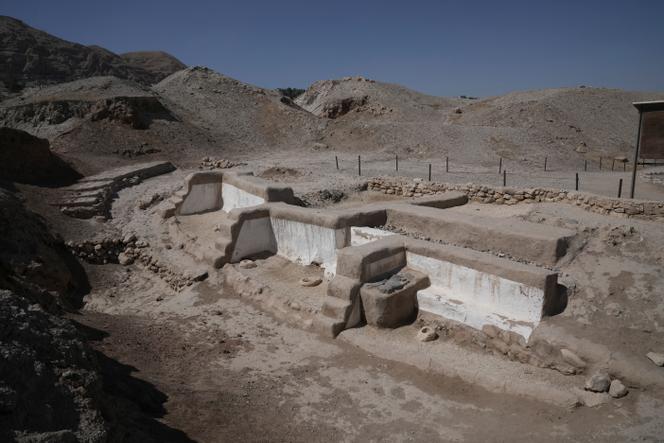

LETTER FROM JERICHO

The archeological site of Tell es-Sultan lies a little way from the center of Jericho, in the Jordan Valley of the occupied West Bank. To the uninitiated visitor, it appears to be a simple mound of earth with holes in it, a tangle of ditches and staircases. It's a little disappointing for those who go there without doing any prior research. But the Palestinians are delighted: These remains are the first they have managed to have classified as a UNESCO World Heritage site, by a unanimous vote of the committee meeting in Riyadh, Saudi Arabia, in mid-September.
The United Nations Educational, Scientific and Cultural Organization hailed the universal value of these remains, one of the earliest known settlements where people first set up homes in the 10th millennium BC. Around 7,000 BC, the heads of some of the deceased were buried here with a clay overlay, one of the earliest manifestations of religious worship in the region. Then, in the Bronze Age, one of the first towns worthy of the name in the Near East was built here: a structured, compartmentalized settlement, indicative of social organization, with enclosures and palaces, which flourished near the waters of the Jordan and a local spring.
Difficult to contest on its merits, this classification has nevertheless provoked strong reactions in Israel. The Foreign Affairs Ministry denounced "another sign of the cynical use the Palestinians are making of UNESCO and the organization's politicization." The ministry does not dispute the Palestinian Authority's responsibility for the site, the fruit of the Oslo II Accord of 1995, nor its right to submit it to the UNESCO committee. But it does believe that the classification deliberately erases the site's more recent Jewish history, by omitting the biblical account of the conquest of Jericho by the Hebrews, led by Joshua, and their subsequent settlement in the Promised Land. "Through this, they are erasing the city's Jewish and Christian heritage," said ministry spokesperson Lior Haiat.
Israeli diplomats were pressured to react by a far-right ally, Minister of Settlements and National Missions Orit Strook, who's a Jewish supremacist from the settler movement. Amichai Chikli, the minister responsible for ties with the Jewish diaspora, compared UNESCO's choice to the propaganda methods of the Third Reich. He also feared that the Palestinian Authority would "damage" the site, "if left unchecked."
Alon Arad, director of the left-wing Israeli NGO Emek Shaveh, believes that "the poor arguments of this campaign are based on an ultranationalist vision, which makes the Jewish people and the state of Israel the only legitimate heirs to the biblical land." However, Palestine was prudent enough to have only the oldest site in Jericho, Tell es-Sultan, classified by UNESCO. These remains are some 2 kilometers from the palaces of the Hasmonean Jewish kings and Herod, which date from the 2nd and 1st centuries BC, as well as from the modern city and its Muslim and Christian heritage.
You have 43.32% of this article left to read. The rest is for subscribers only.
